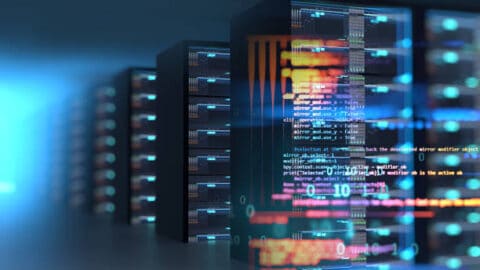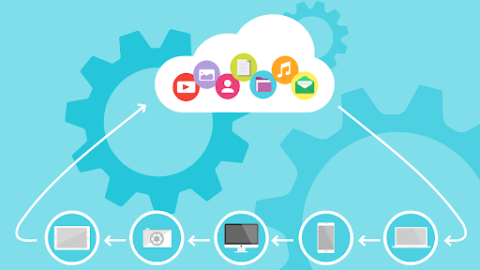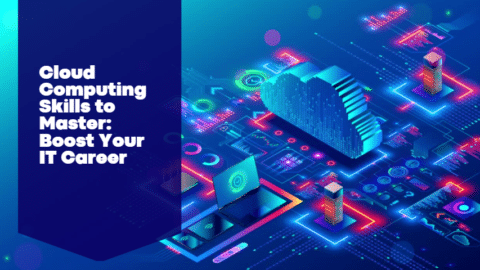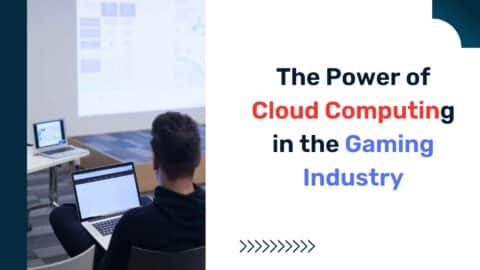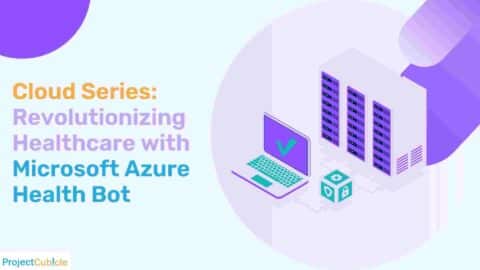Edge Computing vs Cloud Computing
Big and small businesses are continuously moved to the cloud. More than 30% of the cumulative IT budget of an enterprise for cloud computing is now set aside. Today, 70% of businesses have at least one app in the cloud, which indicates that companies benefit from cloud computing and adapting slowly. This is evident from the rise in use of cloud based QuickBooks and Office 365 cloud to cloud migration. When businesses and industry analysts expect the potential growth of cloud computing, many experts agree that the cloud is at the top and that its prestige and advantages are increasing. Here we discuss the edge computing vs cloud computing concept in this article to provide you a clear insight related to the topic. Keep on reading to explore how edge computing differs from cloud computing.
Table of Contents
There is a fact that the state of cloud computing and why the edge is set to become a future of industries for IT transition. We have gathered some pickpockets from this interview to help you learn more about edge computing and why it’s the next big trend in information technologies.
The Reason of the Necessity of Edge Computing Whenever the Cloud Computing is Offered
Most IT practitioners ask this question. This is important. Experts explain how cutting-edge computing is helpful for enterprises to avoid the delay induced by the connection to the central computing system across the network. It has also provided as an example that a computer is really important for a business. The company would fail if the computer were late in its decision-making process.
The time taken for the round trip among two points for the packet header is called network latency. More literally, it is the key to launch an app and tap on a page, between a recipient’s behavior and the reaction to that action. Many considerations, such as the speed and capacity available for the network; the hops that data have to make between routers, interconnection systems, and other connected devices; and the scale of the transferred data packet are contributing to network latency. And the gap between both the client computer requesting and the servers addressing the demand is important.
Sadly, several data centers have been built, with the least costly ground, power, and water. This implies that when the conversion tracking on a request or URL from the average city smart phone they enter data that would actually be processed dozens or hundreds of miles away. But why is this important? Due to the direct relationship between latency and end-user experience. Just don’t hesitate to end-users. Generally, any internet encounter above 100 ms is not immediate anymore.
100 milliseconds is not a tremendous deal if you update an e-mail, access a tablet, or chat with a colleague in another state. But it is a big deal to wear virtual reality goggles(VRG) which don’t quite synchronize with your actions, diagnose your hospital emergency visits remotely, operate an automated processing plant, or work in public safety, where it can have an effect on the safety, safety, and performance of missions in operation in real-time.
Companies use leading-edge computers in those cases where the edge of the network is positioned by intelligently processed equipment. If metrics are below the tolerance specified, an alert signal is provided when the system approaches the failure threshold, which results in the engine shutdown within microseconds to prevent further losses. The unit tracks predefined tolerance threshold measurement measures.
The edge computing process varies from the cloud computing process when the information is transmitted to the centralized data center for up to 2 seconds. The process of decisions is interrupted. The signal delay will lead to losses for the enterprise, so companies choose edge computing rather than cloud computing.
Which of these is more beneficial? Edge Computing or Cloud Computing?
First of all, it is necessary to note that cloud computing and edge computing are non-interchangeable systems that cannot be replaced. Edge computing is utilized in time-sensitive data processing, while cloud computers are used in time-sensitive data processing. In addition to the delay, edge computing is favored in remote areas where access to a centralized location is minimal or no.
These areas require local storage, similar to a mini data center, with edge measurement as an alternative. Edge computing is also useful for smart devices and specialist systems. Though such devices are similar to PCs, they do not consistently execute several functions in computing devices. This advanced computer equipment are smart and respond to particular machines. However, in many sectors that demand rapid reactions, this particular specialty becomes a disadvantage for edge computing.
The Predictions About the Future of the IT Sector
If you are an IT architect, you should know the concept “Edge Computing vs Cloud Computing” well. While many businesses use edge computing and expect the cloud finishes, it is not supported because there is no research system to show it at present. It should be noted that edge computing is not a single approach to the problems of IT suppliers and companies and not addresses any applications in any environment. Cloud computing is still also a critical feature of an enterprise’s IT technology. The best explanation of this issue can be done by providing an example of an IoT system with its machine power and its Azure features have been stated. The code implemented by the system reacts in real-time to a damaging fault, by closing down the IoT computer, while the other program is running in Azure. Due to the use of edge computing the millions of dollars computer no longer depends on the network loop for disaster response and also operates in accordance with cloud computing in distributed communication, deployment, and administration of IoT applications. This supports the importance of cloud computing which works along with advanced computing to offer enterprises with data analytics and applications in the real world.
The Outcome
Edge Computing vs Cloud Computing is an important concept for IT professionals. Edge computing is a method of optimizing cloud computing systems by performing data processing at the edge of the network [1]. Cloud and edge computing technology are distinctive and cannot substitute. It is possible that cutting-edge technology is widely embraced and it’s solved with mild cloud computing problems. It is not, though, justified because it is not the sole response to the problems confronting IT suppliers.
Reference
[1] Washington University in St.Louis

Valencina has more than 25 years of experience as an IT consultant with a great focus on enterprise application UI/UX. She has experience working across multiple industries, acting both in an advisory role, as well as hands on in the technical build of solutions. Valencina is the co-founder and COO of Nitera Training Services.



